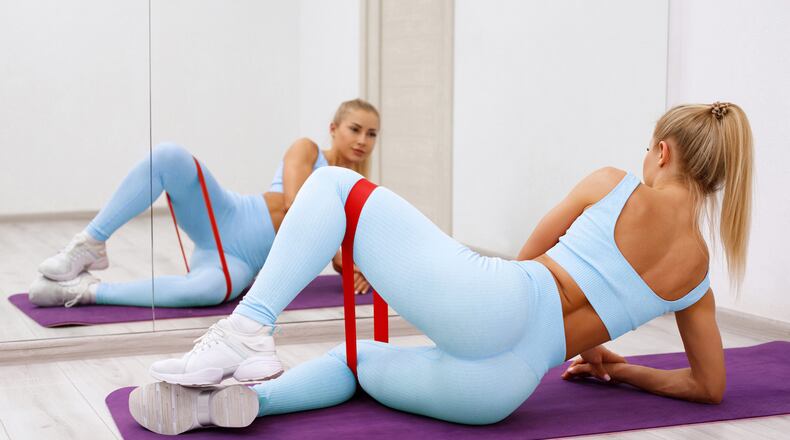Technique: Start in a side-lying position, with the head resting in a comfortable neutral position to avoid neck strain. Bend the knees to an approximate 45-degree angle with one leg on top of the other. The heels, hips and shoulders should be in a straight line, Although the hips may roll backward slightly to allow for greater range of motion, it should not be excessive.
If you feel as if balance is difficult to maintain at any point during the exercise, the hand can be placed on the floor in front of your body for greater stability.
To begin strengthening, in a slow and controlled manner, lift the top leg to separate the knees while the feet remain touching. At the furthest comfortable range of motion, pause, and then slowly lower the leg back to the starting position.
Beginners can start with 2 to 3 sets of 10 to 15 reps per side, two to three times weekly. This exercise is often used in physical therapy, in which case sets and reps will normally vary. Intensity may also vary depending on the level of physical fitness and other factors. As with all things health related, if in doubt, get clearance from a physician before attempting a new exercise.
A common mistake when performing the Clamshell is raising the working leg so high that it exceeds a healthy range of motion, which can result in irritation of the hip over time. To avoid this, when elevating the leg, stop at the point where muscle fatigue can be felt, which requires focus and attention to proper form.
We know that we must use it or lose it to maintain quality and quantity of muscle as we age. However, more is not necessarily always better when it comes to working out, and so pace yourself until you are familiar with your own strengths and weaknesses. If you find that your muscles are not fatigued at 10 to 15 reps, slowing the speed of movement, or placing a resistance band around the thighs above the knees can increase the level of difficulty. The added challenge will also translate into greater strength over time, a definite plus. If new to this exercise, I would recommend omitting the band until a good foundation of strength has been established.
Marjie Gilliam is an International Sports Sciences Master certified personal trainer and fitness consultant. She owns Custom Fitness Personal Training Services LLC. Send email to marjie@ohtrainer.com.
About the Author
